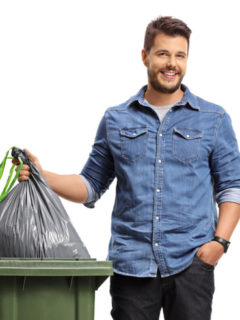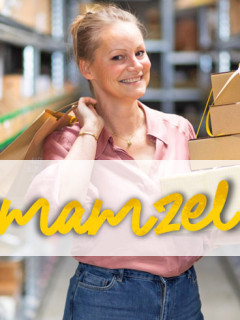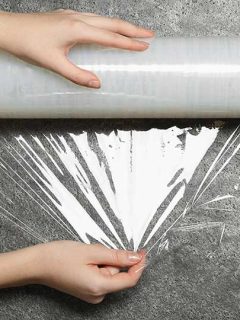Everyone has experienced it during dishes: you are just a little too brutal and pats! Your glass or plate is broken. Shards bring luck? That saying is rather difficult if you have an online shop. Your customers expect their fragile purchase to arrive in perfect condition. The right packaging material then works wonders. Boxes, tapes, labels, bubble wrap… They all contribute to a safe dispatch of your glass or porcelain.
► Step 1: Which box is suitable for glass or porcelain?
The basis of our whole story is the box. With that, this first rule: always use a new box. Even if a used box still looks good, this is no guarantee that the internal structure is intact. Here are a few important points to bear in mind:
- Choose a box with an outer lining of kraft paper. This is more resistant to moisture and your tape will also adhere more easily (more on that in step 3).
- Send glass or porcelain preferably in a double-corrugated box. The thicker structure of the cardboard provides better protection. Read all about the difference between a single-corrugated box and a double-corrugated box here.
- Opt for a customised box. For example, there are standard boxes for coffee mugs, wine bottles, plates, glasses, etc. Conveniently, you often don’t need any additional protective material.

► Step 2: How do I choose the right protective material?
For those using a custom-made box, this second step may not apply as much. If you use a ‘regular’ box, you will probably need to protect your product. Let us get you started with an example. We have included a teapot for the occasion.
- [1] All empty space inside your product should be filled. For example, you can fill the inside of your teapot with packing paper.
- [2] Parts that stick out are extra vulnerable. In our example, we are therefore going to extra wrap the spout and handle so that they become almost one with the rest of the teapot. An important rule: if the surface is scratch-sensitive, use foam foil. For less sensitive products, you can also opt for bubble wrap or even packing paper.
- [3] After this, generouslywrap the entire teapot with foil (foam, bubble or paper). As mentioned, if the surface is scratchy, it is best to use foam foil.
- [4 ] Finally: cover the bottom of your box with a layer of filling material. You then place your product on top of this. Fill any empty space that remains. Your product should not be able to move. It is best to use bubble wrap or filling paper as filling.

► Step 3: How do I close my box?
Closing your box can be done in three ways, as you can see in the image below. Firstly, you have the regular “U-shape” (1). In addition, you can also choose the “double U-shape” (2) and the “H-shape” (3). The latter two are the safest and strongly recommended for heavier or fragile loads. Be sure to read on to find out the best way to apply the tape.
In doubt between PP tape and PVC tape? Then bear in mind that PP tape is better suited for light packages (up to around 20 or 30 kg). PVC tape is generally recommended for heavy parcels (up to 40 kg). By the way, does your box have an outer layer of kraft paper? Then that gives you an extra advantage when sealing it. The paper fibres in kraft are newer and longer so the surface is more flattened. This gives the glue of the tape a much better chance to adhere. For a really strong seal, kraft is the way to go.

► Step 4: Which packaging labels should I use?
A man forewarned is worth two. Throughout the shipping process, it should be clear that your package has a fragile content. For products such as glass or porcelain, there are special adapted labels for this purpose. Below are some images of the most common variants. What is the best way to stick such a label on your box? Here are some final tips:
- It is best to stick the label on the side of your box, not on top of it. Boxes are often shipped stacked, so labels on the top are not visible.
- Don’t stick labels on a crease or a corner. This makes the label more difficult to read and a barcode more difficult to scan. Do not stick the label over tape either: opening the box could damage the label.
- Always stick a warning label on the largest surface of the package. This increases the chances of good visibility.
- Don’t overdo it with the number of labels. Limit yourself to the most necessary (e.g. about three) because with too many labels the message becomes unclear.

- Always use a new box or even better, a custom-made box. Your box should preferably have an exterior lining of kraft paper.
- If your product is susceptible to scratches, wrap it with foam film. Otherwise, bubble wrap or packing paper may also suffice. Then secure your product firmly in the box.
- Choose a strong tape and seal the box properly.
- Provide your box with the right packaging labels so that everyone knows it contains fragile products.














